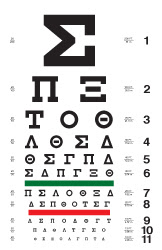 |
| Nitrous Oxide: Getting out the Word |
In the late 1960s, my friends and I had our own countercultural version of Sam Malone's Cheers. We'd get stoned in one another's cellars. (Even when parents weren't around, ground level and higher were too risky--too much detectable evidence.) Our transgressions were pretty much limited to passing around a joint and occasionally braving a psychedelic. Not exactly the stuff of dope fiends.
But an occasional infiltrator in our world--let's call him Andy N.--had a funkier idea. Five years older than the rest of us and with alarmingly short hair, he put it to me this way: Let's you and me break into your father's dental office and lift some of his nitrous oxide. What's a nineteen year old to do? My response ad nauseum was that my father, Dr. Wigdor, was strictly a local anesthesia dentist. Nitrous, he insisted, had too much baggage. Why risk patients throwing up, manifesting mood swings, and chasing dental assistants around the office?
 |
| A Nitrous Soiree ( the gas dispenser is on the far left) |
Nitrous oxide, a.k.a. laughing gas, made its popular debut in 1799 via British physicist Humphry Davy (1778-1829).* It was first synthesized by Joseph Priestly in 1772, but it was Davy who became synonymous with the gas thanks to his extensive research into its mind-altering properties and his penchant for publicity. An obsessive scientist and inventor, he synthesized a slew of compounds and discovered sodium, potassium, calcium, strontium, magnesium, and other elements.
Through public demonstrations, Davy unleashed a mini-craze that launched nitrous party time, especially among London's intelligentsia. (Shelley, Keats, and Coleridge [a lifetime opium eater] were among the party animals.) You could experience the stuff via silk bags, bladders, and an air holder/breathing machine of cast iron with metal and wooden mouthpieces. Later on, Davy built a portable gas chamber. Not sure if he ever brought it to social gatherings.
Davy also explored nitrous' potential as an anesthetic in surgery, which his experiments confirmed. For puzzling reasons, the gas went underground for two generations. That robbed the world of general anesthesia, which would have eliminated untold suffering. Finally, nitrous re-emerged around the time of ether's discovery in1846--just in time for the Crimean War and America's Civil War.
As for me, kudos to the gods, technology, and Dr. Wigdor for saving me from laughter by gas.
 |
| Nobody captured altered states during the 60s and 70s more persuasively than R. Crumb. |
*The Following paragraphs were inspired by The Age of Wonder by Richard Holmes.






.jpg)










